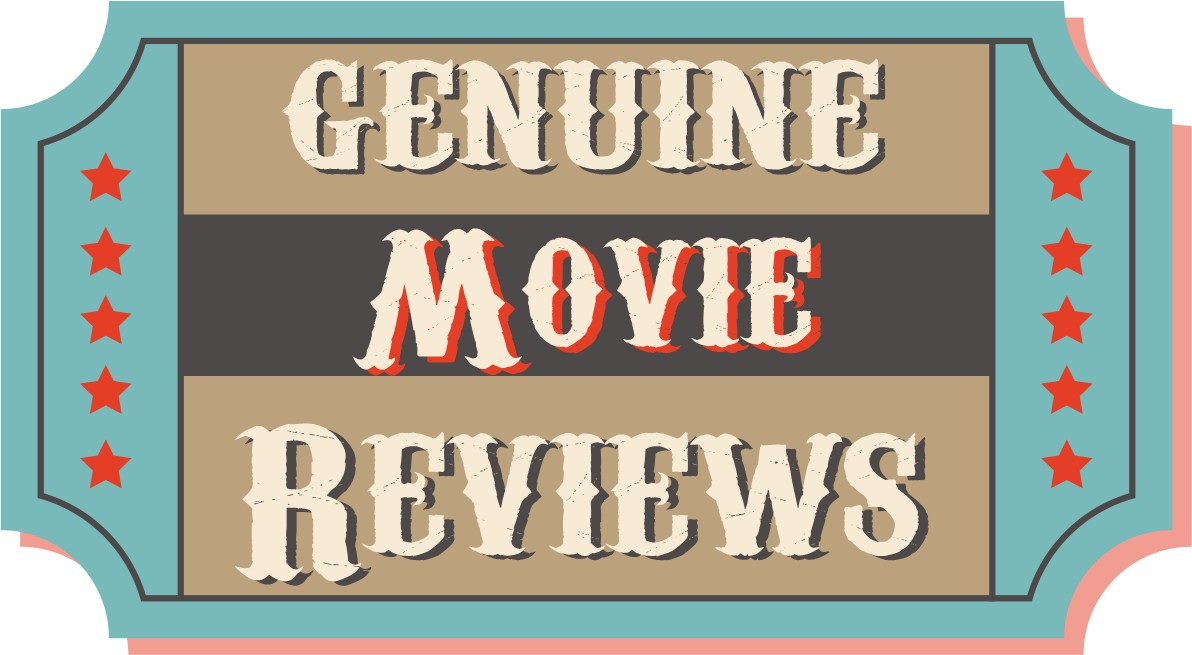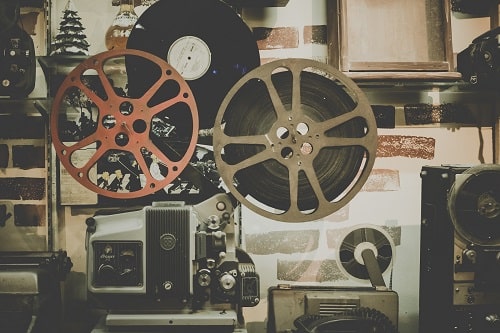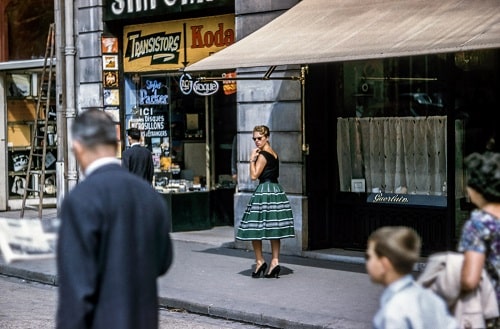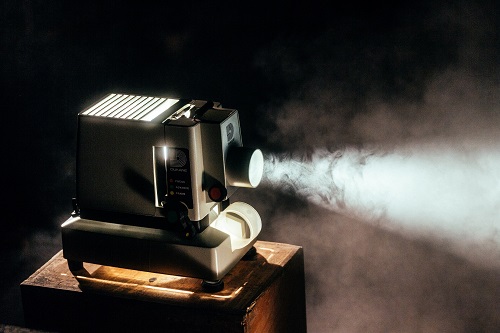Blue Beetle is a highly anticipated superhero movie that was released as part of the DCEU 2023 roster. The film is directed by Angel Manuel Soto and is the 14th installment in the DC Extended Universe. The movie follows the story of Jaime Reyes, a teenager who becomes the Blue Beetle after discovering a mysterious scarab that gives him superpowers.
Fans of the Blue Beetle comics have been eagerly waiting for the release of this movie, and now they can get a behind-the-scenes look at how it was made. There are several videos available online that show the making of Blue Beetle, including interviews with the cast and crew, footage from the set, and insights into the special effects used in the film. These videos provide a unique glimpse into the world of movie-making and offer a fascinating look at the process of bringing a comic book character to life on the big screen.
The making of Blue Beetle was a massive undertaking that involved a talented team of filmmakers, actors, and special effects experts. From scouting locations to designing costumes, every aspect of the movie was carefully planned and executed to create a thrilling and immersive experience for viewers. With the release of Blue Beetle just around the corner, fans can now get a closer look at the hard work and dedication that went into making this exciting new addition to the DC Extended Universe.
Casting the Blue Beetle
The casting process for Blue Beetle was a crucial part of bringing the character to life on the big screen. Director Angel Manuel Soto and his team had a clear vision of the type of actors they wanted to portray the characters in the film. The casting process for the lead role of Jaime Reyes, aka Blue Beetle, and the supporting cast was rigorous and thorough.
Choosing the Lead
The lead role of Jaime Reyes was awarded to Xolo Maridueña, who is best known for his role in Cobra Kai. Maridueña was chosen after an extensive audition process that included several rounds of screen tests. The filmmakers were looking for someone who could bring the right mix of vulnerability, humor, and action to the role. Maridueña’s natural charm and charisma made him a perfect fit for the character of Jaime Reyes.
Supporting Cast Selection
The supporting cast of Blue Beetle was also carefully selected to ensure that each actor could bring something unique to their respective roles. Belissa Escobedo was cast as Milagro Reyes, Jaime’s younger sister. Escobedo’s audition stood out for her ability to capture the character’s spunk and wit. Bruna Marquezine was cast as Jenny Kord, the love interest of Jaime Reyes. Marquezine’s audition impressed the filmmakers with her ability to convey both vulnerability and strength.
George Lopez was cast as Rudy Reyes, Jaime’s uncle. Lopez brought his signature humor and warmth to the role, and his chemistry with Maridueña helped bring the family dynamic of the Reyes family to life.
Overall, the casting choices for Blue Beetle were a critical part of bringing the characters to life on the big screen. The filmmakers were able to assemble a talented and diverse cast that helped bring the story to life in a compelling and engaging way.
Scriptwriting and Story Development
Scriptwriting and story development are critical components of any movie-making process. The Blue Beetle movie is no exception. In this section, we will take a closer look at how the script and story were developed for this exciting superhero adventure.
The Blue Beetle script was written by Gareth Dunnet-Alcocer, who is known for his work on the Miss Bala movie. Dunnet-Alcocer’s script was based on the DC Comics character of the same name and follows the story of a young Mexican-American boy named Jaime Reyes, who becomes the Blue Beetle. The script was then reviewed and revised by the movie’s director, Angel Manuel Soto, and the DC Studios co-CEOs, James Gunn and Peter Safran.
To develop a compelling story, the writers had to create well-rounded characters and a captivating plot. They started by reading other scripts and analyzing what made them successful. They then focused on the protagonist, Jaime Reyes, and his goals. The driving force behind the story was distilled down to one word: “legacy.” The writers wanted to explore the idea of leaving a legacy and how that can impact an individual and their community.
The story development process involved fleshing out the characters and solidifying the plot. The writers had to ensure that the story was engaging and had a clear beginning, middle, and end. They also had to consider the movie’s budget and ensure that the story was feasible to shoot.
Overall, the scriptwriting and story development process for Blue Beetle involved a lot of hard work and dedication. The writers had to create a story that was true to the character’s comic book origins while also making it fresh and exciting for a new audience. The end result is a thrilling superhero adventure that is sure to captivate audiences.
Designing the Blue Beetle Suit
The Blue Beetle exoskeleton suit is one of the most iconic elements of the character’s appearance. Bringing this suit to life on the big screen was a significant challenge for the production team, requiring a combination of practical and digital effects to create a believable and visually striking costume.
Concept artist Phil Boutte was responsible for designing the Blue Beetle suit for the film. His goal was to create a suit that was “as authentic as possible” to the character’s comic book appearance while still being practical for use in a live-action film. Boutte worked closely with the film’s director, Angel Manuel Soto, and the production team to fine-tune the design and ensure that it would work well on camera.
The final design for the Blue Beetle suit features a sleek, metallic blue exoskeleton with intricate detailing and glowing blue accents. The suit is designed to be both protective and flexible, allowing the character to move and fight with ease while still looking intimidating and powerful.
To bring the suit to life, the production team used a combination of practical and digital effects. A physical suit was created for use in close-up shots and scenes where the character is not moving quickly, while digital effects were used to enhance the suit’s appearance and allow for more complex, dynamic movements.
Overall, the design of the Blue Beetle suit is a testament to the skill and creativity of the film’s production team. By combining practical and digital effects, they were able to bring this iconic superhero costume to life in a way that is both faithful to the source material and visually stunning on the big screen.
Filming Locations
The upcoming superhero film, Blue Beetle, was filmed in multiple locations across the United States and Puerto Rico. The film commenced principal photography in late May 2022 under the working title ‘Mofongo’ and wrapped up in less than two months, in July of the same year.
Primary Shooting Sites
Most of the filming for Blue Beetle was done in the Atlanta Metropolitan Area, precisely, in Decatur, Georgia, where Wilder Studios are located. The studio served as the primary shooting site for the film, and the cast and crew filmed a few key scenes there.
Apart from Decatur, the film was also shot in El Paso, Texas, and Puerto Rico. In El Paso, the crew filmed a few scenes, and the city served as a backdrop for the film. The film’s cinematographer, Pawel Pogorzelski, captured some stunning shots of the city’s landscape, which will undoubtedly add to the film’s visual appeal.
Puerto Rico was another location where the crew filmed a few scenes. The crew filmed in San Juan, the capital city of Puerto Rico, and some of the surrounding areas. The film’s production team chose Puerto Rico because of its diverse landscape, which provided a perfect backdrop for the film’s action sequences.
In addition to these primary shooting sites, the film was also shot in Los Angeles, California. However, the crew only filmed a few scenes in the city, and it did not serve as a primary shooting location for the film.
Overall, Blue Beetle was filmed in multiple locations across the United States and Puerto Rico. The film’s production team chose these locations because they provided the perfect backdrop for the film’s action sequences and helped bring the story to life.
Directing and Production
Director Angel Manuel Soto and the production team worked tirelessly to bring the world of Blue Beetle to life. The movie was shot in various locations, including Atlanta and Los Angeles, with a budget of over $100 million.
Soto, who has previously directed acclaimed films such as “La Granja” and “Charm City Kings,” was chosen to helm the project due to his ability to tell stories that are both intimate and epic. He worked closely with screenwriter Gareth Dunnet-Alcocer to ensure that the script was faithful to the character of Blue Beetle while also being accessible to a wider audience.
The production team faced several challenges during the making of the film. One of the biggest was creating the suit for Blue Beetle, which had to be both functional and visually stunning. The team worked with costume designer Laura Jean Shannon to create a suit that was faithful to the comic book while also being practical for the stunts and action sequences.
In addition to the suit, the team also had to create the special effects for Blue Beetle’s powers, which include flight and the ability to generate energy blasts. The visual effects team, led by supervisor John Nelson, worked closely with Soto to ensure that the effects were both realistic and visually striking.
Overall, the directing and production of Blue Beetle was a massive undertaking that required the collaboration of hundreds of talented individuals. The end result is a film that is both visually stunning and emotionally resonant, and a testament to the power of teamwork in filmmaking.
Post-Production
After the filming of Blue Beetle was complete, the post-production phase began. This phase involved various tasks such as editing, sound design, and visual effects. The post-production phase is critical because it can make or break the final product.
Visual Effects
One of the most crucial aspects of post-production for Blue Beetle was the visual effects. The film features a lot of action scenes, and many of these scenes required extensive visual effects work. The visual effects team had to create a wide range of effects, including explosions, energy blasts, and flying sequences.
To achieve these effects, the visual effects team used a combination of practical effects and computer-generated imagery (CGI). They filmed many of the scenes with actors on green screens, allowing them to add in the necessary effects later. The team also used motion capture technology to capture the movements of the actors and create more realistic animations.
One of the biggest challenges the visual effects team faced was making the effects look seamless and realistic. They had to ensure that the effects matched the lighting, camera angles, and movements of the actors. To achieve this, they used advanced software and techniques to blend the effects seamlessly into the live-action footage.
Overall, the visual effects in Blue Beetle are impressive, and they add a lot of excitement and spectacle to the film. The team did an excellent job of creating a believable and immersive world for the characters to inhabit.
Release and Reception
Blue Beetle premiered in El Paso on August 15, 2023, and was released in the United States on August 18, by Warner Bros. Pictures. The movie was initially scheduled to be released as an HBO Max exclusive, but Warner Bros. decided to release it theatrically due to the positive reception it received during test screenings.
The film received generally positive reviews from critics. Many praised the film’s representation of Latinx culture and the performances of the cast, particularly Xolo Maridueña as Jaime Reyes/Blue Beetle. The film’s action sequences and visual effects were also commended. However, some critics felt that the film’s plot was formulaic and lacked originality.
Despite the mixed reception, the film has grossed over $106 million at the box office so far, making it a moderate success. The film’s success has led to speculation that a sequel may be in the works, although nothing has been confirmed yet.
Overall, Blue Beetle’s release and reception have been a significant moment in the representation of Latinx superheroes on the big screen. The film’s positive reception and box office success have shown that there is a demand for diverse superhero stories and characters, and hopefully, this will lead to more representation in the future.
Future of the Franchise
After the release of Blue Beetle, fans are eagerly anticipating the future of the franchise. While there has been no official announcement about a sequel, the post-credit scenes in the film hint at what’s to come.
In the first post-credit scene, the audience is introduced to the character of Ted Kord, who is known in the comics as the original Blue Beetle. This scene suggests that the franchise may explore a mentor-mentee relationship between Ted and Jaime Reyes, the current Blue Beetle.
The second post-credit scene introduces the villainous organization Intergang, which has ties to the notorious Darkseid. This hints at a possible crossover with other DC properties, such as the Justice League or the New Gods.
Another possibility for the future of the franchise is a spin-off series or film centered around the Reyes family. Blue Beetle heavily features the importance of family, and the Reyes family dynamic is a unique and compelling aspect of the film.
Overall, the future of the Blue Beetle franchise is uncertain, but the post-credit scenes provide exciting possibilities for where the story could go next. Fans will have to wait and see what the filmmakers have in store for the beloved character.



 RELATED POSTS
RELATED POSTS





0 Comments